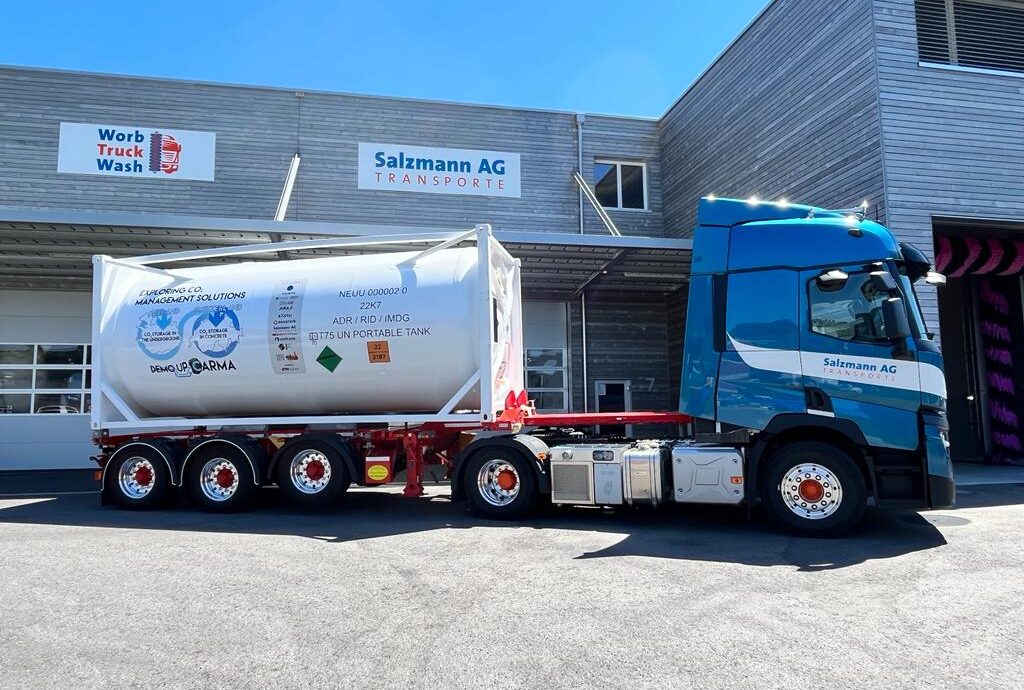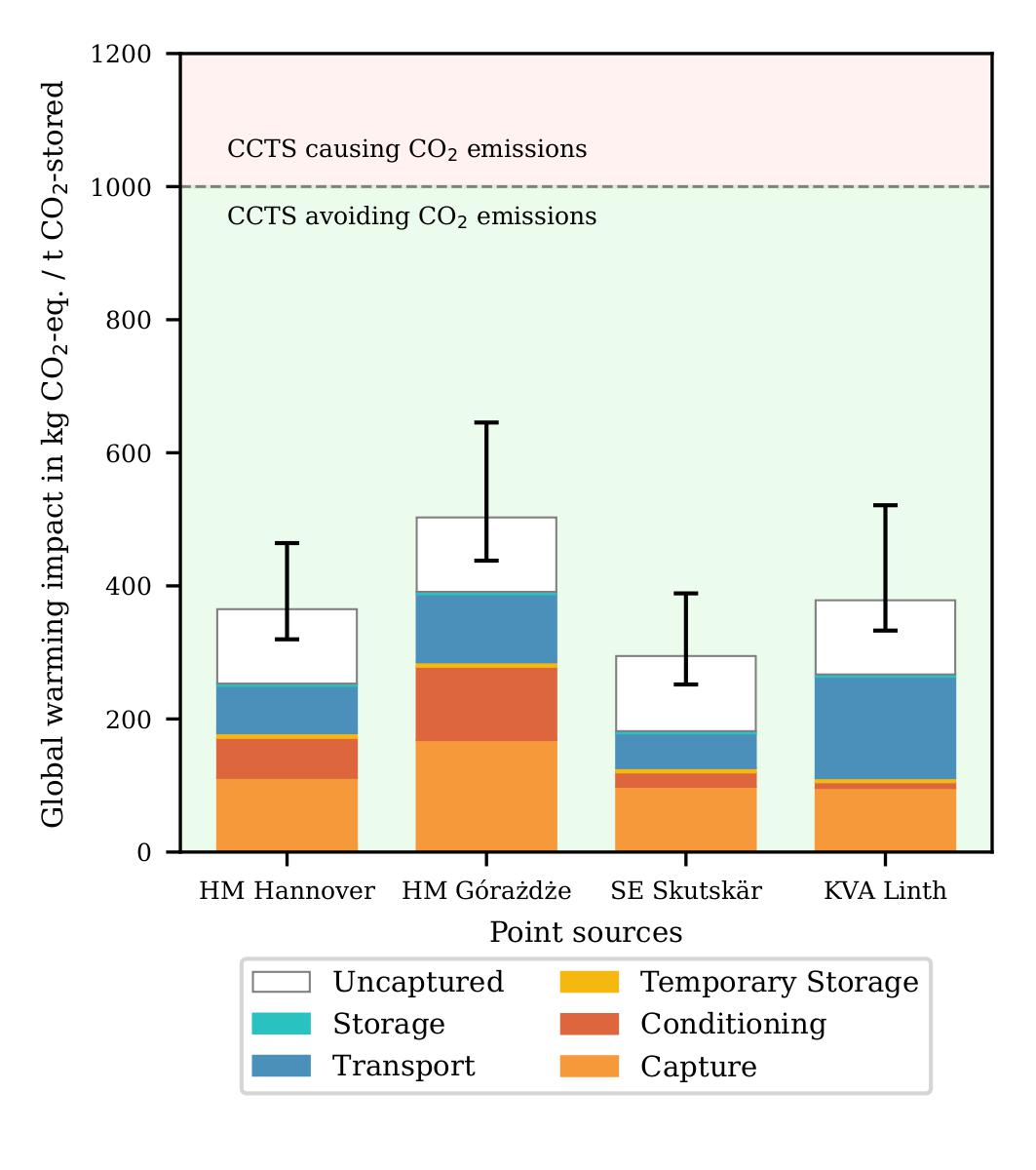
CCTS can already avoid CO2 emissions: An overview of the environmental impacts of carbon capture, transport, and storage
On 26.04.2024 by Johannes BurgerBy Johannes Burger
Johannes is a PhD candidate at ETH Zurich, working in the Energy and Process Systems Engineering (EPSE) and Reliability and Risk Engineering (RRE) groups. His research revolves around Carbon Capture, Transport, and Storage (CCTS). He is focusing on the aspects that enable or delay the deployment of a large-scale transportation infrastructure to bring CO2 from the point of capture to the storage sites.
Net zero economies will need carbon capture, transport, and storage (CCTS) to decarbonize CO2-intensive industries, like cement production, and compensate for residual emissions from agriculture or aviation. Achieving the magnitudes of CCTS needed for net zero requires an infrastructure capable of capturing, transporting, and storing several megatonnes of CO2 per year as soon as possible. Pipelines are best suited for transporting large amounts of CO2 but do not exist in Europe yet and take several years to plan and build. Therefore, infrastructure for immediately capturing, transporting, and storing CO2 will rely on currently available technologies. As no experience in applying these technologies to CCTS exists, their climate impact on a CCTS system is unknown. As we show in a recent study, a CCTS system with available technologies can avoid more than half of the emissions produced at an industry plant in Switzerland.
Carbon capture, transport, and storage (CCTS) is one of the few ways to decarbonize CO2-intensive industries (e.g., cement or paper production) and reach net zero emissions across the whole economy. The CCTS infrastructure must be scaled up quickly to contribute to the decarbonization of the industry. CCTS consists of capture units at industrial plants that capture CO2, then the CO2 is liquefied and transported to a storage site. In Europe, sites in the North Sea currently have the best conditions for permanent storage. However, it is currently challenging for emitters to send CO2 to storage sites in the North Sea as there is no infrastructure for transporting CO2 in Europe. Pipelines would be the cheapest and most efficient mode of transport but are not available due to long lead times in planning and constructing them. Using transport modes that are already available can help to overcome this hurdle and start the scale-up of the CCTS industry. “Available CCTS technologies” are considered to be available on the market, although not widely used for CCTS.
Are available technologies too carbon-intensive for CCTS?
To avoid greenhouse gas emissions, CCTS chains must store more CO2 than they emit. Greenhouse gases are emitted throughout the whole process, from capturing the CO2 to transporting and storing it safely. For a CCTS supply chain with currently available technologies, the question therefore remains whether the supply chain avoids more emissions than it causes. For any given process, the life cycle assessment (LCA) methodology can quantify the emissions caused by the process. We apply LCA to four CCTS supply chains and analyze the net benefit of CCTS using currently available technologies.
The LCA evaluates four CCTS chains from mainland and northern Europe and quantifies the environmental impacts of their construction, operation, and deconstruction. The setup of the four CCTS chains considered in the LCA is shown in Figure 1. The setup is applied to CCTS chains from Hannover (Germany), Górażdże (Poland), Skutskär (Sweden), and Linth (Switzerland). The details of the chains are modeled distinctly for each location. However, the main difference between the chains lies in the transport parts.

Figure 1: System boundary for CCTS chains with permanent storage in offshore aquifers.
The LCA shows that each of the chains can achieve greenhouse gas emission reduction from the point sources, even when using technologies that are readily available today. Figure 2 shows the global warming impact caused by each chain for capturing, transporting, and safely storing 1 ton of CO2. Only chains that emit less than 1000 kgCO2 per ton of CO2 stored effectively avoid greenhouse gas emissions. If the chains caused more CO2, the industrial plant could simply continue to emit. However, as we show in Figure 2, all chains are avoiding at least 50% of the emissions of the industrial plant and thus effectively reducing its climate impact.

Figure 2: Global warming impact of permanently storing 1 ton of CO2. The impact is split along the parts of the CCS supply chain. Only CCTS chains emitting less than 1000 kgCO2 per ton of CO2 stored are effectively avoiding greenhouse gas emissions.
Capturing and transporting CO2 causes the largest climate impact for CCTS from Switzerland
In general, two factors have a large influence on the global warming impact of the chains: the transport distance and the greenhouse gas intensity of the local electricity grid. For chains with long distances between the emitter and storage site, the majority of greenhouse gas emissions are caused by fossil fuel-powered ships and trucks, as these are the currently available transport modes. In the near future, transport may be realized with decarbonized vehicles, such as ammonia-driven ships or electrified trucks. In the long term, however, CO2 will likely be transported via pipelines. Pipelines are the most cost-effective way of transporting large amounts of CO2 and also emit the least greenhouse gasses.
The greenhouse gas intensity of the local electricity plays a big role in the total emissions. This effect can be observed in the chains starting in Górażdże and Hannover. The Polish and German electricity mixes heavily rely on coal and gas power plants. Thus, the electricity-intensive conditioning step indirectly causes many emissions through the use of electricity (see Figure 2).
When analyzing the Swiss chain in more detail, the transport and capture stages emerge as the most greenhouse gas intensive along the CCTS chain. Capturing CO2 requires significant amounts of heat, which causes a lot of direct emissions. Using a low-carbon heat source, such as heat pumps or available heat from the emitter, bears the potential of reducing the emissions from the capture stage. Transport causes the most global warming in the chain from Switzerland. The long distance to the storage site in the North Sea requires several transport modes and relies on vehicles powered by fossil fuels. The direct emissions from transport vehicles cause a large global warming impact in the Swiss CCTS chain. Permanent CO2 storage deep under the seabed of the North Sea causes only little greenhouse gas emissions.
Potential improvements and future developments of CCTS supply chains
Our study shows that implementing a CCTS chain based on currently available equipment and transport modes already avoids CO2 emissions from point sources across Europe, even before a pipeline infrastructure is built. However, further reductions of the chains’ climate impact are possible through three main improvements:
- Decarbonizing heat for the capture process will replace the emissions from natural gas but requires another source of energy. Heat pumps, heat from biomass, or heat integration into the existing industrial plant are potential alternatives and have to be evaluated for each site individually.
- Deploying a shared pipeline infrastructure to transport CO2 from all over Europe to the respective storage sites is the transport option with the least environmental impact. In addition, the transport gets much cheaper due to economies of scale.
- Reducing emissions from electricity generation will lead to lower indirect emissions in all supply chains. The electricity required for liquefying the CO2 will cause less indirect emissions. Especially in regions with an energy system relying primarily on fossil fuels, the climate impact of the CCTS chains can be reduced significantly.
Nonetheless, Europe can kick-off its deployment of CCTS chains and pave the way for a ramp-up towards large-scale CO2 capture, transport, and storage. A functioning CCTS industry and infrastructure are crucial for reaching national and international climate goals. Our findings enable the immediate ramp-up of the CCTS infrastructure without waiting until a pipeline network is built.
Cover image: DemoUpCARMA (www.demoupcarma.ethz.ch)
Keep up with the Energy Blog @ ETH Zurich on Twitter @eth_energy_blog.
Suggested citation: By Burger, Johannes. “CCTS can already avoid CO2 emissions: An overview of the environmental impacts of carbon capture, transport, and storage”, Energy Blog @ ETH Zurich, ETH Zurich, April 26th, 2024, https://blogt.ethz.ch/energy/carbon-capture-transport-storage
If you are part of ETH Zurich, we invite you to contribute with your findings and your opinions to make this space a dynamic and relevant outlet for energy insights and debates. Find out how you can contribute and contact the editorial team here to pitch an article idea!

